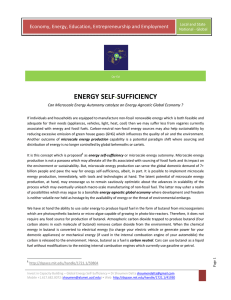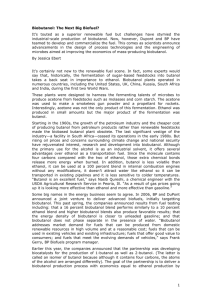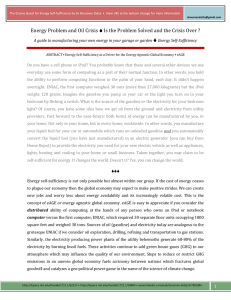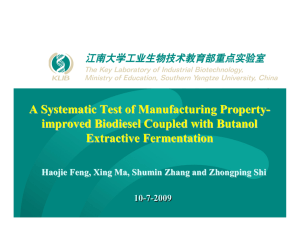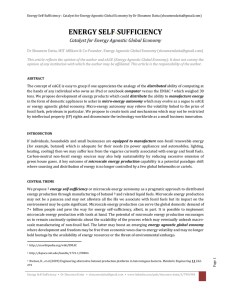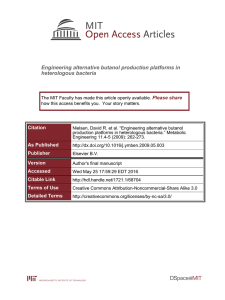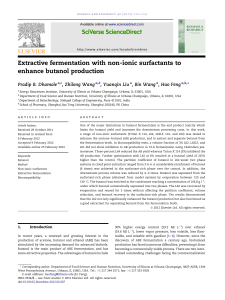Mass balance analysis
advertisement
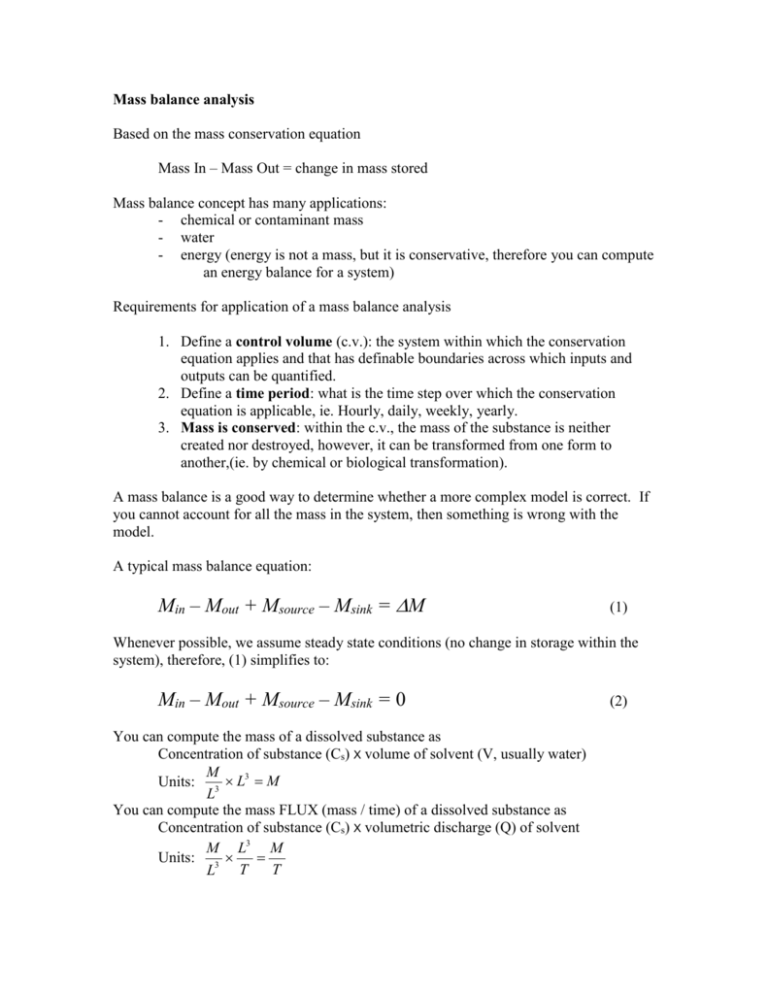
Mass balance analysis Based on the mass conservation equation Mass In – Mass Out = change in mass stored Mass balance concept has many applications: - chemical or contaminant mass - water - energy (energy is not a mass, but it is conservative, therefore you can compute an energy balance for a system) Requirements for application of a mass balance analysis 1. Define a control volume (c.v.): the system within which the conservation equation applies and that has definable boundaries across which inputs and outputs can be quantified. 2. Define a time period: what is the time step over which the conservation equation is applicable, ie. Hourly, daily, weekly, yearly. 3. Mass is conserved: within the c.v., the mass of the substance is neither created nor destroyed, however, it can be transformed from one form to another,(ie. by chemical or biological transformation). A mass balance is a good way to determine whether a more complex model is correct. If you cannot account for all the mass in the system, then something is wrong with the model. A typical mass balance equation: Min – Mout + Msource – Msink = M (1) Whenever possible, we assume steady state conditions (no change in storage within the system), therefore, (1) simplifies to: Min – Mout + Msource – Msink = You can compute the mass of a dissolved substance as Concentration of substance (Cs) X volume of solvent (V, usually water) M Units: 3 L3 M L You can compute the mass FLUX (mass / time) of a dissolved substance as Concentration of substance (Cs) X volumetric discharge (Q) of solvent M L3 M Units: 3 T T L Example: Butanol is being discharged into a lake at a rate of 20 kg/d (Md). The concentration in the lake (CL) is 1 X 10-4 kg/m3. Streamflow at lake outlet (Qo) is 3 X 104 m3/d. We want to know the rate of butanol degradation within the lake. Md Cs Qs CL Qo Co Control volume is represented by dashed line. Time step is daily, so all terms in the equataion need to be in units of mass/day. Assumptions: 1. All processes are at steady state (no change in lake volume and no change in mass over a day), therefore we assume that Qs = Qo and M = 0. 2. Complete and instantaneous mixing occurs when the butanol enters the lake, therefore, Co = CL = 1 X 10-4 kg / m3. 3. No butanol concentrations in inflow stream (Cs = 0). 4. No internal sources of butanol inside of the control volume (Msource = 0). 5. No butanol fluxes from anywhere else (i.e, no butanol in rainfall and no butanol coming out of lake sediments. The mass balance equation for this problem is: (Qs Cs M d ) (Qo Co ) M source M sin k 0 (3) M in Qs C s M d (3 10 4 m 3 /d ) (0) 20 kg/d M out Qo C o (3 10 4 m 3 /d ) (1 10 4 kg/m 3 ) 3 kg/d M source 0 M sin k unknown (this is what we are trying to find) Solve for Msink: (0 + 20 kg/d) – (3 kg/d) = 17 kg/d So 20 kg/d of butanol is entering the lake from the discharge pipe, 3 kg/d is leaving via the stream, and the rest is being lost from the lake somehow (could be volatilization from the lake surface) or transformed within the lake (by microbial degradation).










